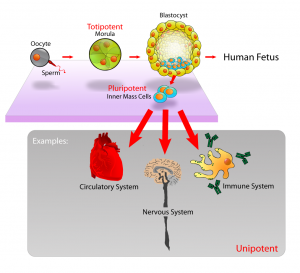
The Obama administration is now appealing a federal judge’s ruling that reversed the go-ahead Obama gave to stem cell researchers just after taking office. At issue is a federal law prohibiting the extraction of stem cells resulting in the destruction of a human embryo. And while this works its way through the courts, US scientists are once again hamstrung relative to their foreign counterparts.
It can’t be argued that the stem cell extraction doesn’t destroy the embryos, and in that light, the judge’s ruling is likely correct given the current law. However, the argument has always been simply that those embryos were going to be destroyed or allowed to expire anyway. (Frozen embryos have an effective shelf life of about 10 years.)
In the U.S. alone, there are some 400,000 frozen embryos awaiting disposition. Most have been abandoned by couples who either succeeded in having children and no longer need the surplus, or who have given up hope of having children. Either way, extraordinary fertilization techniques continue to create thousands more embryos each year than will never see the inside of a uterus.
Debate rages over whether those embryos are people or property, but whichever side you are on, the current stem cell law makes no sense. If the embryos are property, then parents and/or clinics have the right to dispose of them as they wish. This obviously would include turning them over for scientific research.
If embryos are people, then the practice of creating and shelving them in a freezer is clearly as immoral as destroying them outright, whether for science or not. The law should require that each and every embryo be given a reasonable chance to grow. This means fertilization processes could only produce one or two embryos at a time, and that those embryos would need to be promptly implanted into wombs. This would dramatically reduce the success rate and increase the cost of procedures like in-vitro fertilization. The alternative would be to require that all the dozens of extra embryos created in the process be implanted in other women. Although it seems this would have to result in women being legally drafted to bear children, or at the very least make you pretty nervous when one of your girlfriends announced she and her hubby were trying in-vitro.
While it may be easy to stand against the destruction of embryos for science, even in light of all the potential good stem cells may provide for health care. It’s much harder to stand for consigning many couples to a childless existence.
Yet it’s morally and legally inconsistent to have it both ways.
